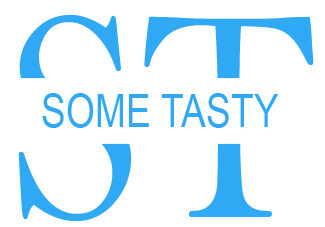Navigating dietary restrictions can be challenging, especially for individuals undergoing dialysis. Dialysis helps to perform the functions of the kidneys by removing waste products and excess fluids from the blood. However, to optimize the effectiveness of dialysis and maintain overall health, it’s crucial to adhere to a specialized diet. This guide provides insights into what you can eat when on dialysis, focusing on managing nutrient intake and ensuring a balanced diet.
Understanding Nutritional Needs
People on dialysis need to manage their intake of several key nutrients:
- Protein: Essential for repairing tissues and maintaining muscle mass.
- Sodium: Needs to be limited to control blood pressure and fluid retention.
- Potassium: Must be monitored to prevent dangerous levels in the blood.
- Phosphorus: High levels can weaken bones and harm the heart.
- Fluids: Intake should be controlled to prevent fluid overload.
Protein-Rich Foods
Dialysis patients often require more protein due to the loss of protein during the dialysis process. Good sources of high-quality protein include:
- Lean Meats: Chicken, turkey, and lean cuts of beef or pork.
- Fish: Salmon, tuna, and other low-phosphorus fish.
- Eggs: A versatile and excellent source of protein.
- Dairy: Low-phosphorus options like cream cheese, ricotta, and cottage cheese in moderation.
- Legumes: Beans and lentils, although portion control is important due to potassium content.
Low-Sodium Foods
Limiting sodium helps control blood pressure and reduces fluid retention. Opt for:
- Fresh Vegetables: Low-sodium choices like green beans, carrots, and cucumbers.
- Fresh Fruits: Apples, berries, grapes, and pineapples are lower in potassium.
- Herbs and Spices: Use these instead of salt to flavor food.
- Home-Cooked Meals: Preparing food at home allows you to control the sodium content.
Managing Potassium
Excess potassium can be dangerous for dialysis patients. Foods low in potassium include:
- Apples and Berries: Safe fruit choices with low potassium levels.
- Cabbage and Cauliflower: Great low-potassium vegetables.
- Rice and Pasta: These staples are low in potassium and can be the base of many meals.
- White Bread and Tortillas: Preferable over whole grains due to lower potassium content.
Controlling Phosphorus
High phosphorus levels can lead to bone and heart problems. Foods low in phosphorus include:
- Egg Whites: A great source of protein without the high phosphorus found in yolks.
- Fresh Meats: Avoid processed meats that are often high in phosphorus.
- Low-Phosphorus Dairy: Cream cheese, ricotta, and sour cream in moderation.
- Non-Dairy Creamers: Often lower in phosphorus than milk.
Fluid Management
Controlling fluid intake is crucial to avoid fluid overload, which can cause swelling and high blood pressure. Tips for managing fluids include:
- Monitor Intake: Keep track of all fluids consumed throughout the day.
- Ice Chips: Sucking on ice chips can help quench thirst without consuming large amounts of fluid.
- Limit High-Water Foods: Foods like watermelon, soups, and gelatin should be consumed in moderation.
- Season Food Well: Properly seasoned food can help reduce the desire to drink excessively.
Sample Meal Plan
Breakfast
- Scrambled egg whites with bell peppers and onions
- A slice of white toast with a small amount of cream cheese
- A small apple or a handful of blueberries
Lunch
- Grilled chicken breast with a side of steamed green beans
- A small serving of white rice
- Pineapple slices for dessert
Snack
- A handful of unsalted crackers with a small portion of cottage cheese
- Fresh cucumber slices
Dinner
- Baked salmon with a side of sautéed cabbage
- A small serving of pasta with a drizzle of olive oil and garlic
- Fresh strawberries for dessert
Evening Snack
- Rice cakes with a small spread of peanut butter
Tips for Eating Out
- Ask for Customizations: Request meals with no added salt and ask for dressings and sauces on the side.
- Choose Wisely: Opt for grilled or baked items over fried foods.
- Watch Portion Sizes: Restaurants often serve large portions; consider sharing a meal or taking half home.
Conclusion
When on dialysis, it’s essential to maintain a balanced diet that meets your nutritional needs while managing protein, sodium, potassium, phosphorus, and fluid intake. By choosing the right foods and monitoring portions, you can enjoy a varied and satisfying diet that supports your health and enhances the effectiveness of your dialysis treatment. Always consult with your healthcare provider or a renal dietitian for personalized advice and dietary planning.




